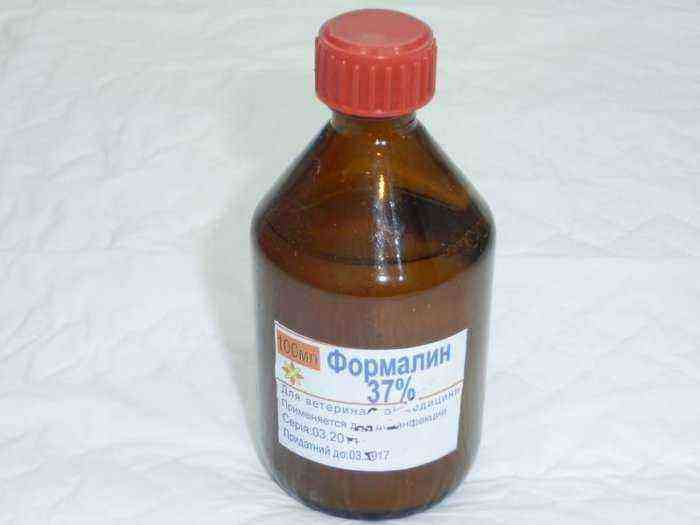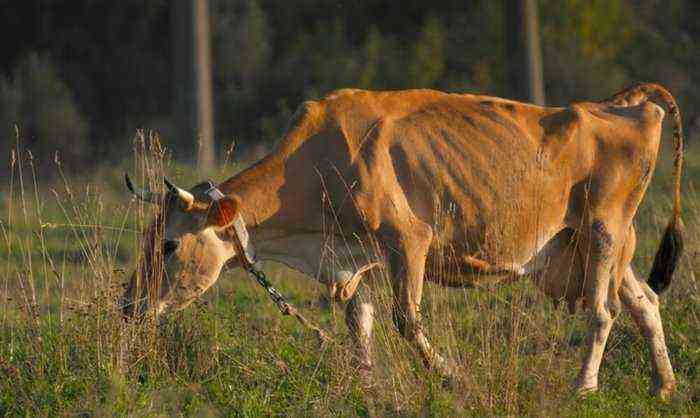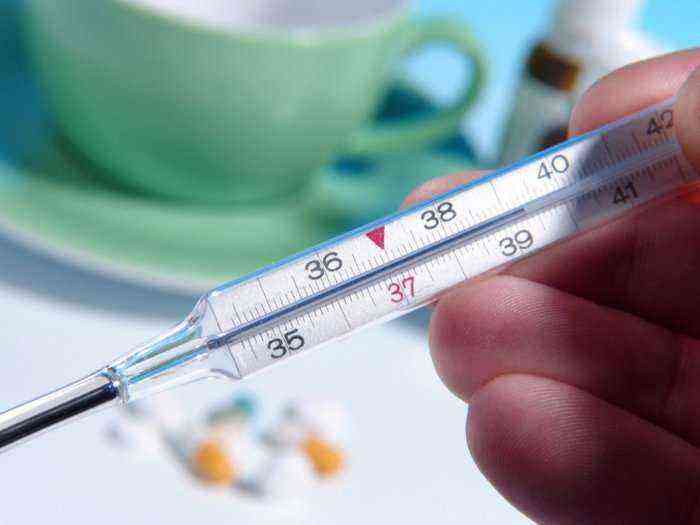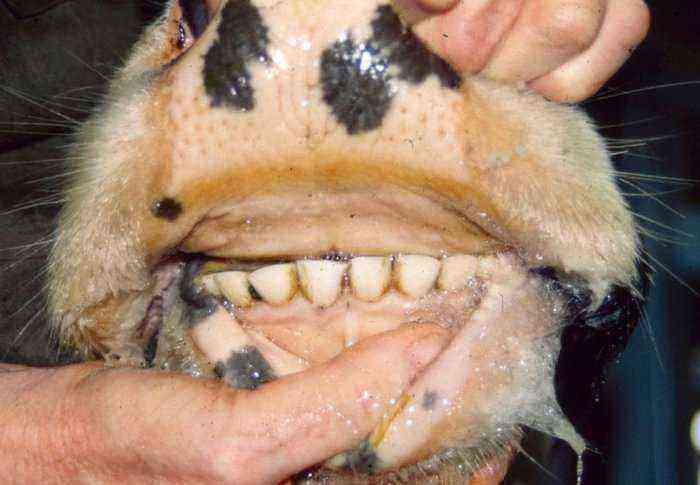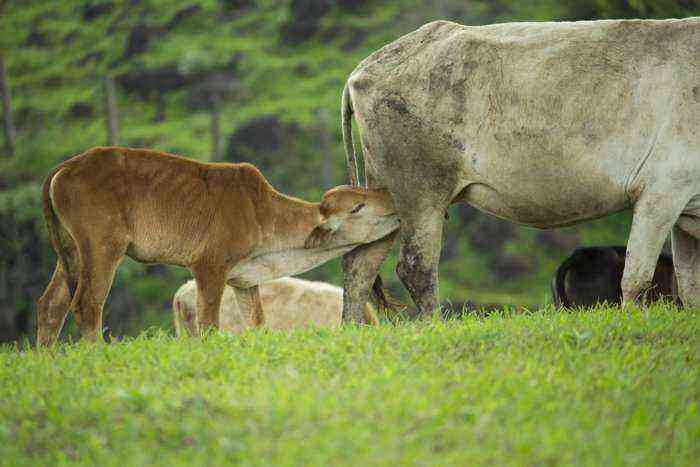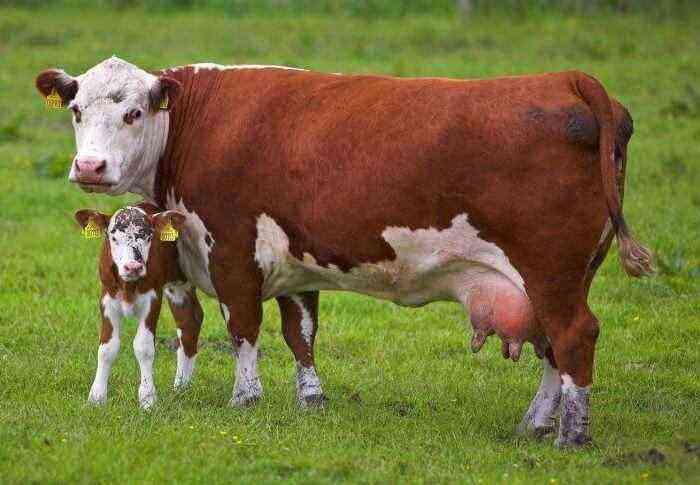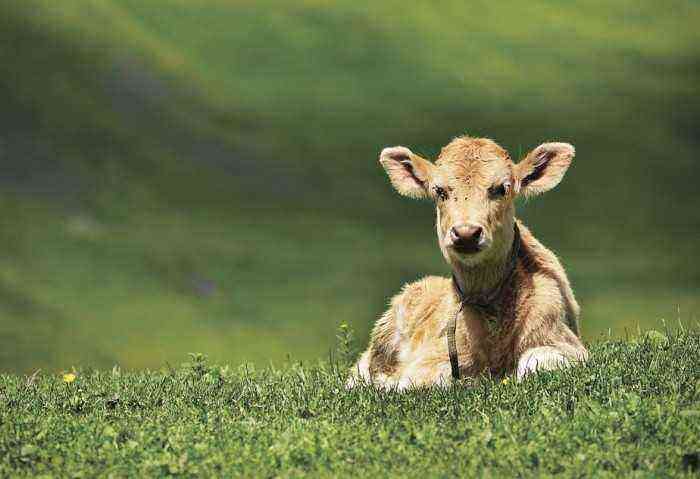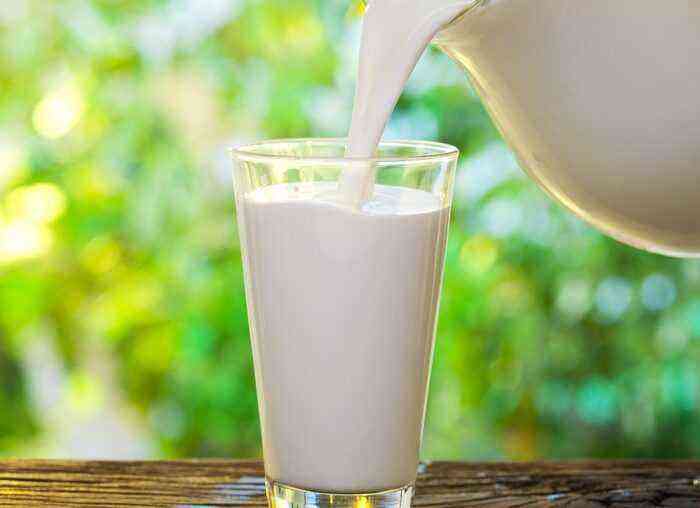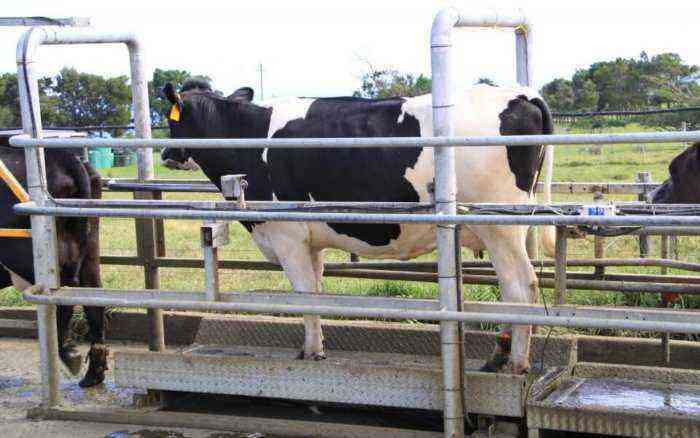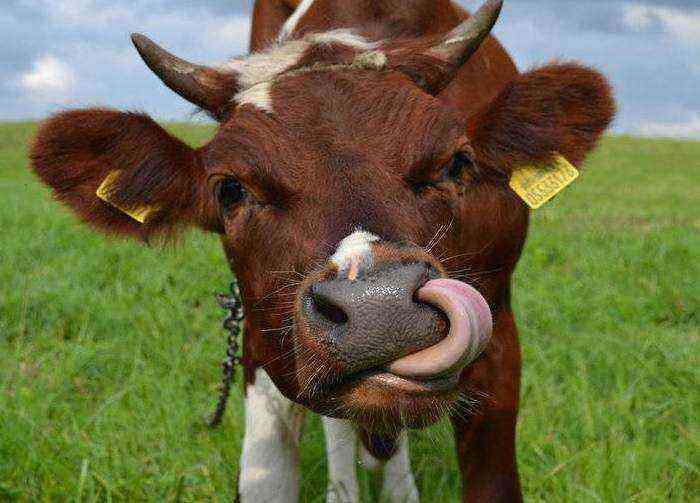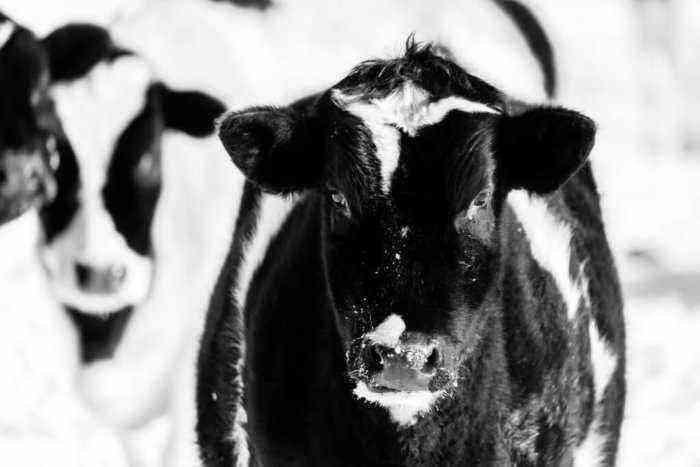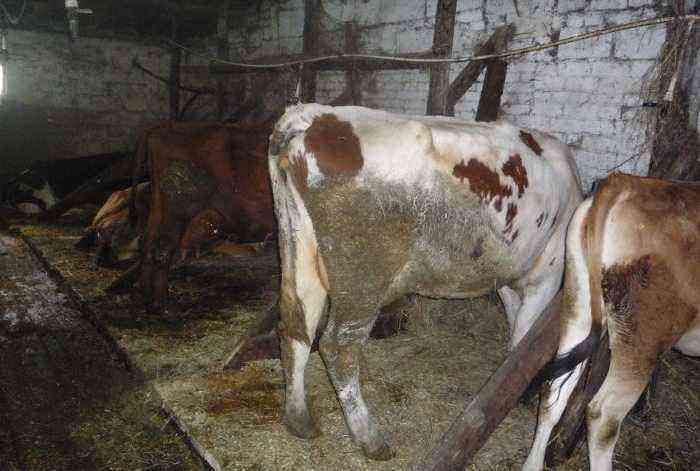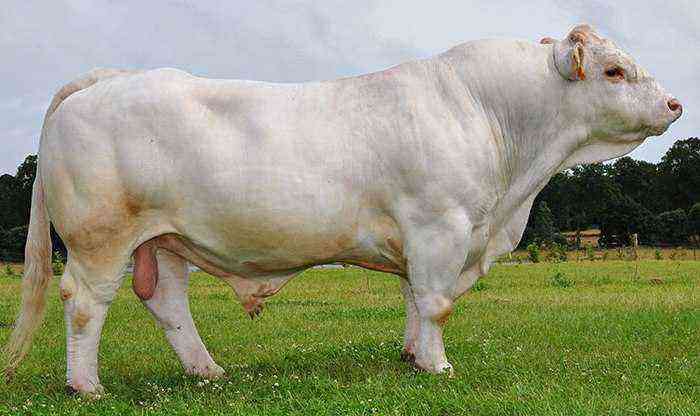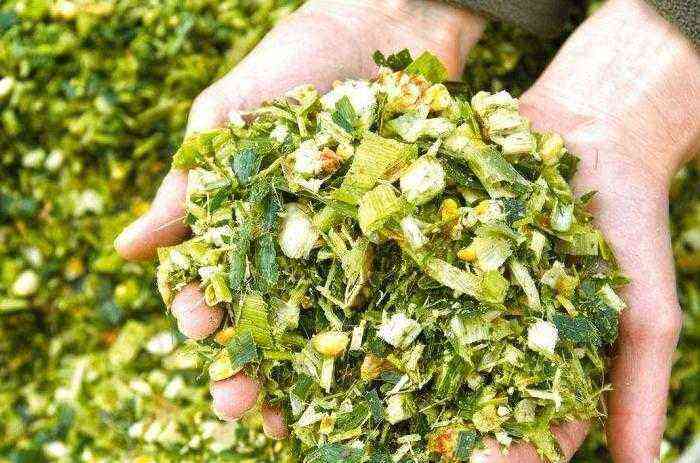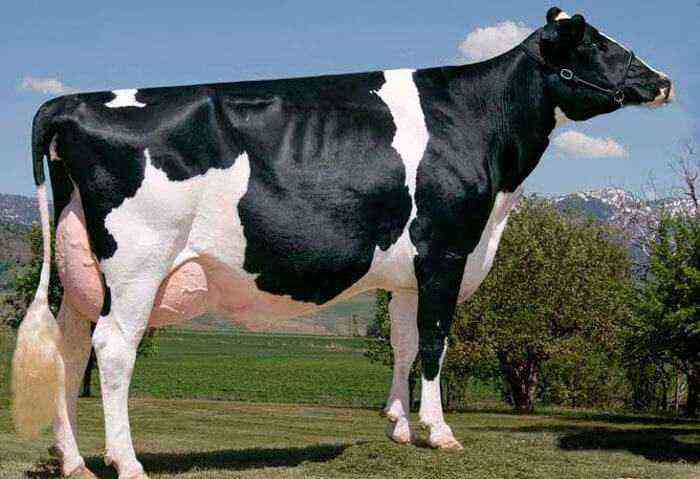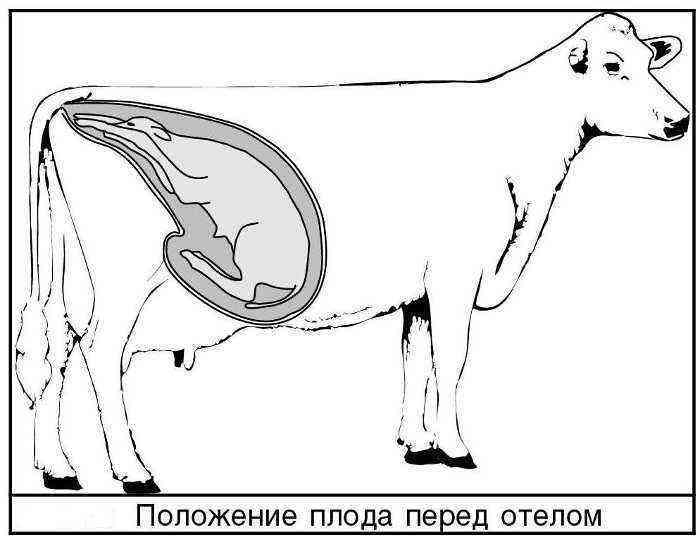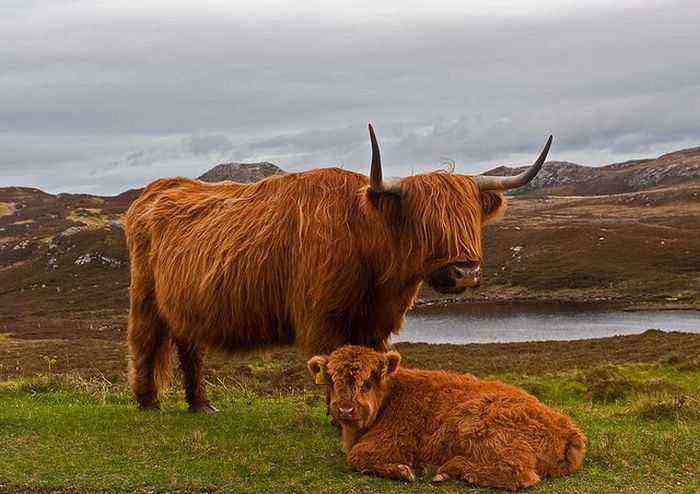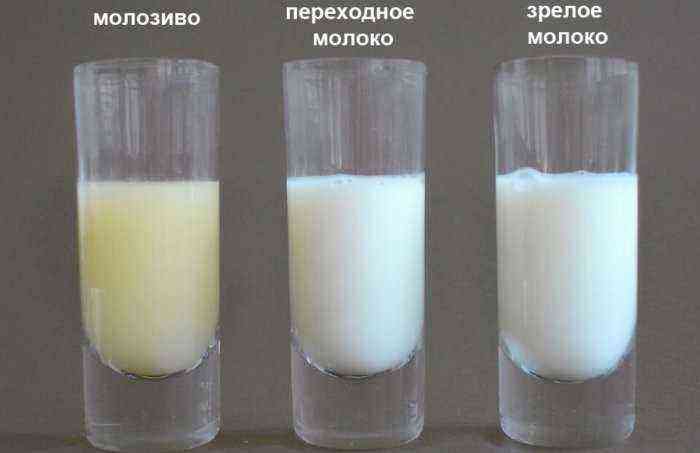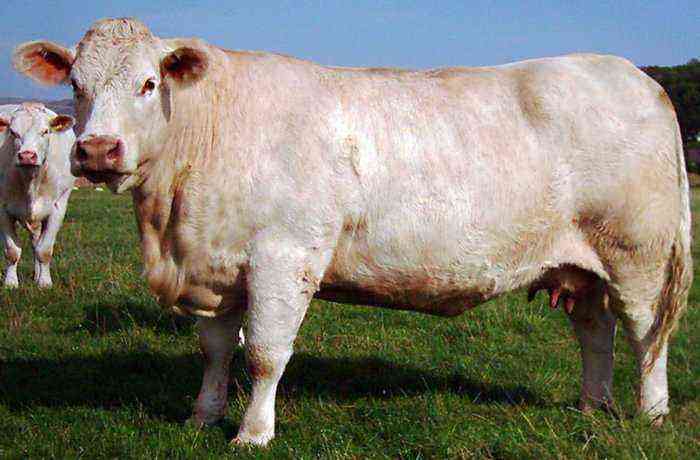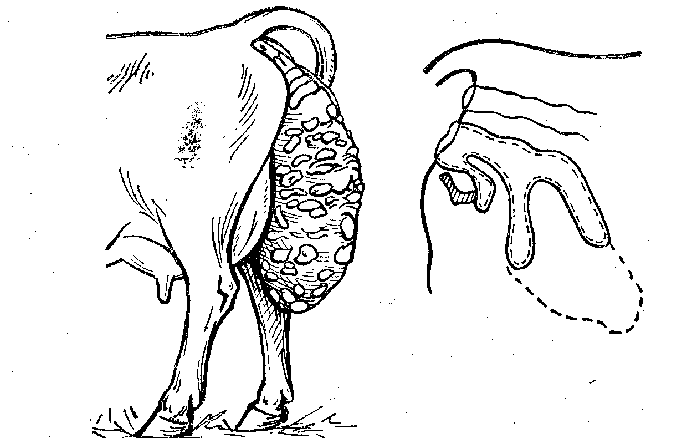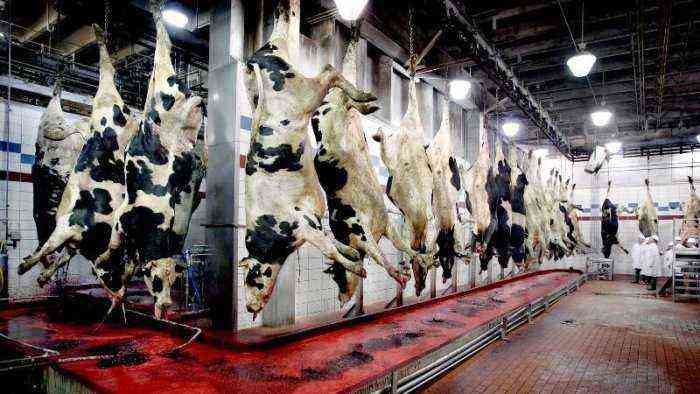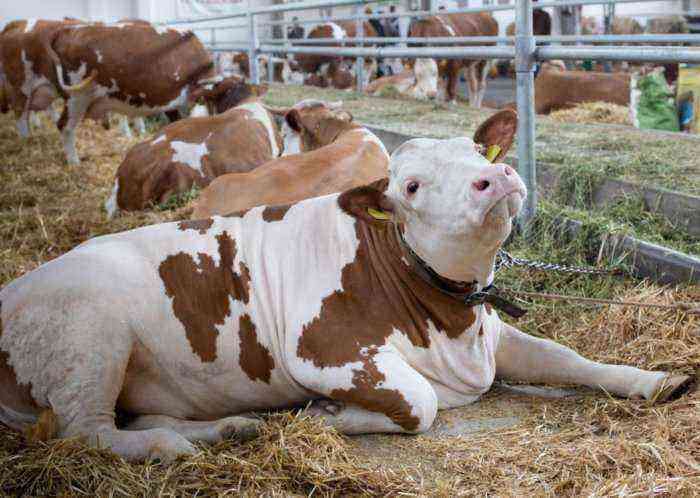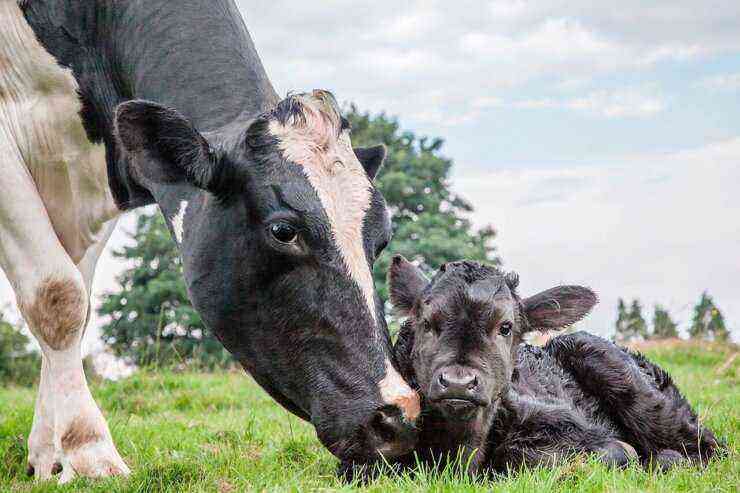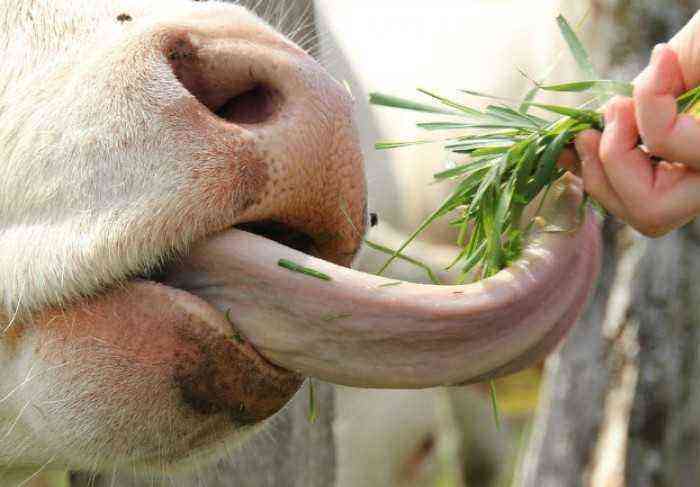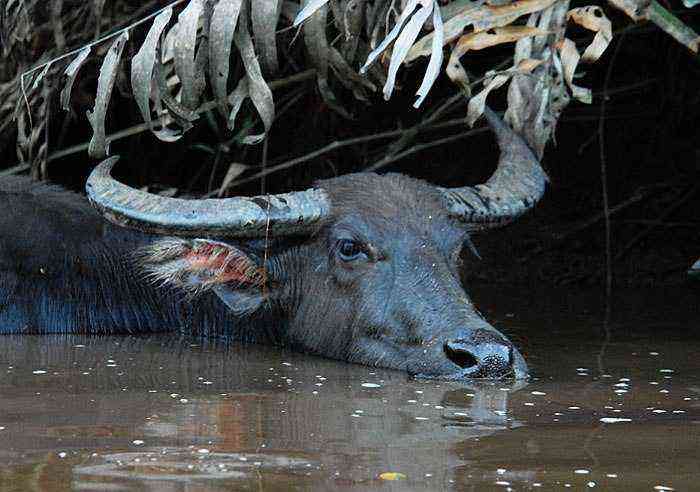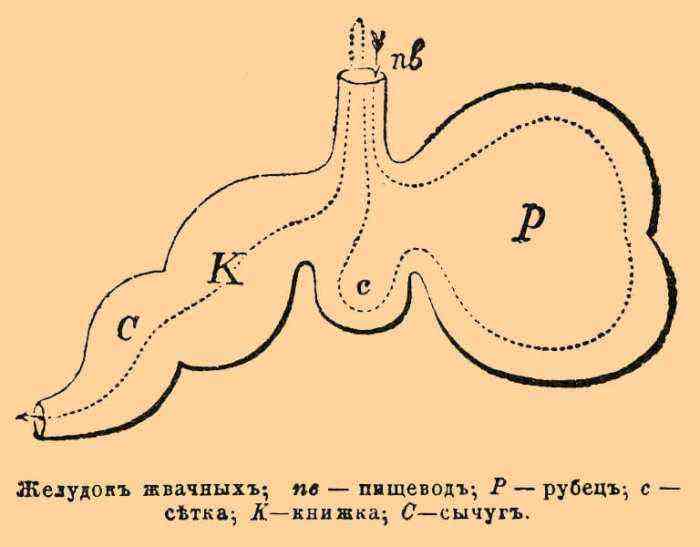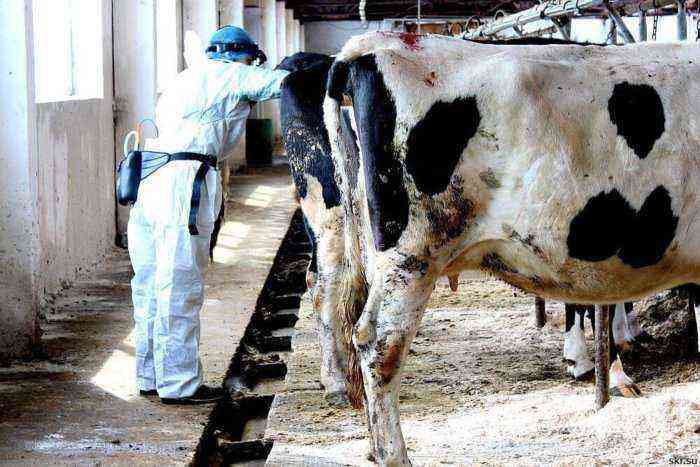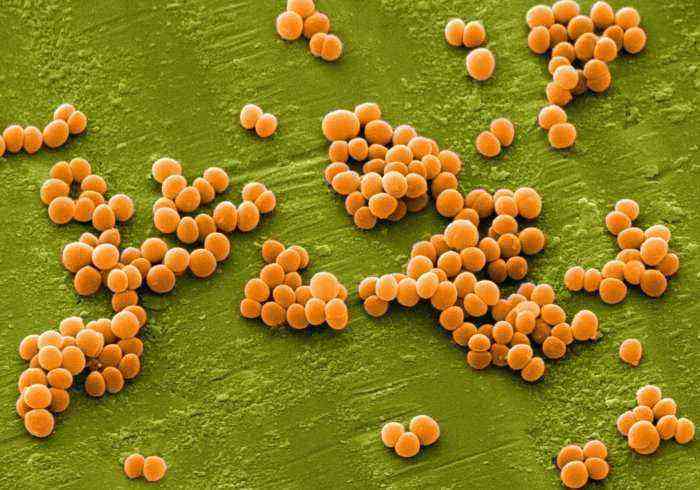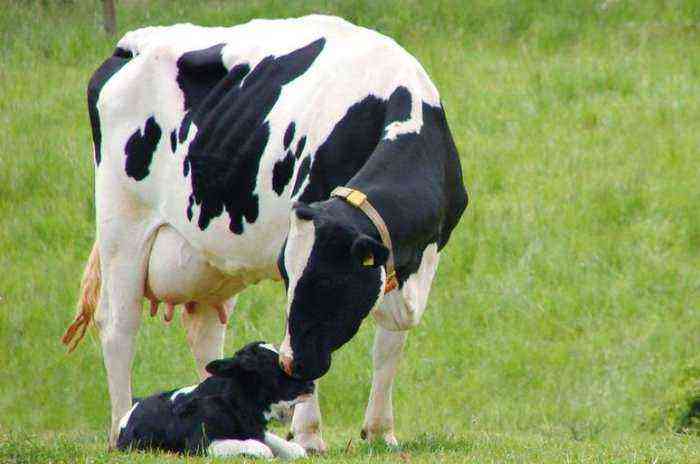Mating cows is a process that requires the control of the farmer, because the timely appearance of the offspring, and hence the potential profit of the farm, will depend on its quality. This article will discuss important issues – by what signs is it determined whether a cow has come into heat, when it is better to inseminate her, how animals are mated. Farmers need this knowledge to run their businesses successfully.
Mating cattle
signs of hunting
It is very important to recognize the signs of hunting in time, since the result of fertilization directly depends on this. The farmer can tell when a cow is ready to mate by her behavior. How the animal behaves at an early stage of hunting:
- The cow is worried, constantly wandering around the fences.
- Mooing for no reason.
- Butts.
- Chases other cows.
- Her appetite is deteriorating.
- The cow assumes a mating stance and mounts other individuals herself.
- Increased motor activity.
The following physiological manifestations are characteristic of the early stage of hunting:
- Labia swell, redden.
- A small amount of mucous secretion is secreted from the vulva.
The early hunting phase lasts several hours. Subsequently, the mucous secretion is secreted from the genitals profusely, and the animal becomes more friendly, but continues to mount other cows. She gets into the position for insemination and stands motionless. The hair on her tail is slightly ruffled. Still no appetite. The following signs are characteristic of the late stage of hunting:
- Nervousness goes away.
- Blood comes out of the vulva.
- Gradually there is an appetite.
Reference. If there are bulls in the herd, they keenly feel the onset of hunting in cows. If all signs of this condition are blurred in a cow, then the behavior of the bull will help to accurately determine the right time for mating.
There are other ways to diagnose ovulation in cows. It is advisable to use them when there are no bulls in the herd or in cases where the state of hunting in females is weakly expressed. Consider them:
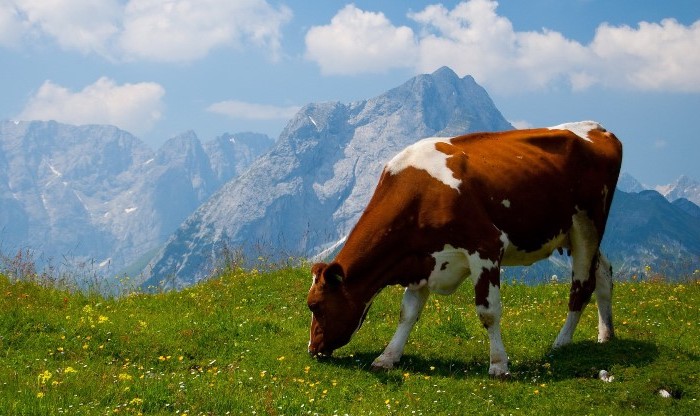
Symptoms of hunting cows
- Temperature measurement. During ovulation, body temperature always rises slightly.
- Measurement of motor activity using a pedometer sensor. To do this, a device is attached to one of the limbs or to the collar of the cow, which controls the level of its mobility. With the help of average data obtained over a certain period, the farmer can determine when exactly the cow is most active.
Sexual cycle of cows
The sexual cycle in cows is the period of time from the beginning of one hunt to the next. Its average duration is 18-24 days. It consists of two phases:
- luteal
- Follicular.
Consider first what the follicular phase of the sexual cycle is. On the day when the follicle is fully mature, the concentration of the hormone estradiol in the body of the female reaches its maximum value. During this period, she shows signs of hunting. The cow assumes a motionless posture and waits for insemination and she herself mounts other individuals in the herd. The next stage of the sexual cycle is ovulation. The egg is released from the follicle. This usually happens 10-12 hours after the end of the hunt. At this point, the follicular phase of the cycle, which is about 3-4 days long, ends, and the luteal phase begins.
If fertilization does not occur, then the very next day or a little later, bloody discharge from the vulva appears. After a short estrus, the formation of a corpus luteum begins, this process takes about 5 days. It is involved in the synthesis of progesterone. If fertilization does not occur, the corpus luteum gradually resolves. Along with this, the growth of follicles occurs in several stages.
As a result, several follicles mature in the ovaries, one of which is called dominant, since it is larger than the others. It is he who will release the egg during ovulation for fertilization. In the absence of fertilization, the corpus luteum resolves, this completes the luteal phase of the cycle.
Scheduled mating
The mating of cows with bulls today is carried out by two methods – manual and boiling. Free or natural reproduction in farms is not practiced.
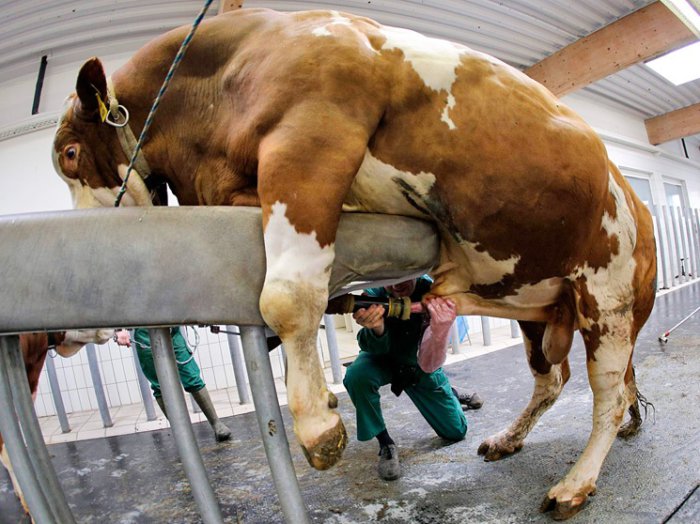
bull semen collection
Manual mode
This technique involves assigning several females to one bull, sometimes their number reaches one hundred. The farm must keep a calendar of insemination for each individual. At the right time, the bull is brought to the cow, which must be inseminated, while the rest of the time the animals are kept separately. Mating is recommended in the morning, and it is important to make sure that the individuals are healthy.
Reference. This technique has a drawback – when male and female individuals are kept separately, the sexual cycle is violated.
Cooking method
This mating technique involves keeping bulls and cows separately, but every day a bull is added to females for 2 hours in the morning and evening. At this time, mating occurs without human intervention, but under his control. The male himself chooses an individual that is ready for insemination. If a cow is inseminated twice, she should be taken out of the pen.
Mating process
Consider the stages of mating:
- Excitation, without which an erection is impossible. At this stage, blood rushes to the genitals of the male, then the S-curve is reduced, due to which the penis is released from the prepuce.
- Sadka. The bull lifts the body, hugs the female and inserts the penis into the vulva.
- Frictions. In the process of mating, the male makes several forward movements (usually 2 or 3) to stimulate ejaculation.
- Ejaculation. As a result, the seed penetrates into the genital organs of the female.
Reference. If during the mating or within a few hours after it, the cow ovulates, conception occurs.
Pregnancy
Pregnancy occurs when an egg is fertilized by a sperm. In this case, the cow will not enter the state of hunting in 11-15 days. The zygote occupies a position in one of the horns of the uterus, where the development of the embryo begins. In the first 60 days after fertilization, the nervous, respiratory, circulatory systems and all organs are formed, horns are laid.
Starting from the 61st day of pregnancy, the embryo turns into a fetus. Now he receives nutrition through the placenta. In the womb, he actively grows and gains weight. Pregnancy in a cow lasts, on average, 9 and a half months. The pregnancy ends with the birth of a calf.
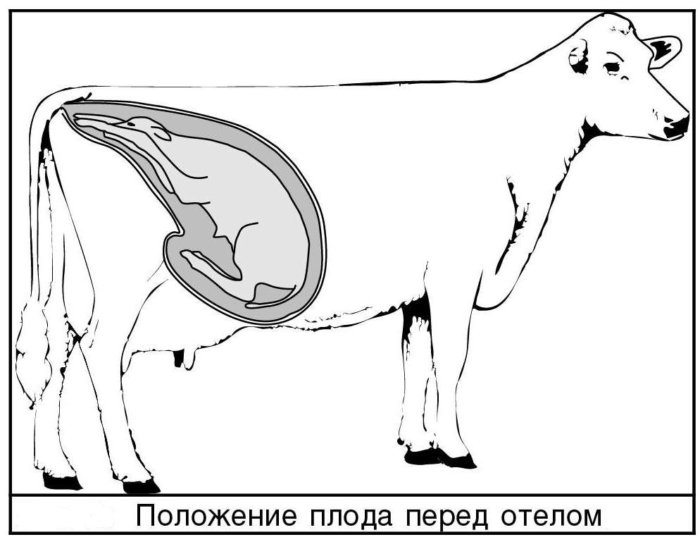
Position of the calf before calving
Note. The period of pregnancy is an important stage in the life of a cow, at which time it is necessary to provide her with good care, including good nutrition and acceptable living conditions.
Childbirth
Labor begins when contractions begin. In this case, the cervical canal gradually opens. During strong attempts, the calf is pushed out of the uterus into the birth canal and out. It is important for the farmer to help the cow during calving, as childbirth is often accompanied by complications:
- Ruptures of the vulva.
- Prolapse of the uterus.
- Detention of the placenta.
In each case, the cow needs veterinary care, since the listed complications often lead to infection of the uterus and genital organs, infertility and even death of the animal.
Reproduction of cows is a natural process of procreation, and for farms it is of particular importance, because the offspring is a potential profit. That is why it is important to learn how to correctly determine the period of hunting in a cow, inseminate her in time, provide proper care for a pregnant individual and be ready to assist her at calving.
